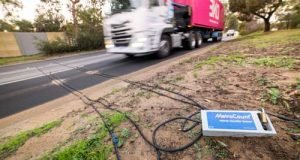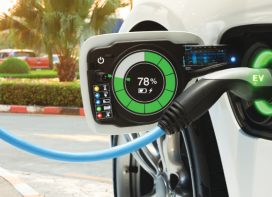 World leader in automatic traffic monitoring, Australia based MetroCount has been exhibiting at Traffiicnfratech Expo regularly. According to Maurice Berger, Business Development Manager, the event has been the perfect place to share the company’s traffic monitoring solutions to government agencies, toll operators and survey companies India
World leader in automatic traffic monitoring, Australia based MetroCount has been exhibiting at Traffiicnfratech Expo regularly. According to Maurice Berger, Business Development Manager, the event has been the perfect place to share the company’s traffic monitoring solutions to government agencies, toll operators and survey companies India
MetroCount has been consistently improving and developing new technologies to optimise traffic data collection. What are the range of solutions being offered in India along with RoadPod VT?
The RoadPod VT is the portable, two-tube Automatic Traffic Counter / Classifier (ATCC) used predominantly throughout India and the rest of the world. Other solutions for monitoring vehicle traffic include:
• RoadPod VT4 – an innovative four-tube portable ATCC enabling comprehensive data collection from multi-lane highways, providing individual datasets from each lane. • RoadPod VL – a permanent monitoring system using embedded loop wire to provide long-term traffic data. This modular system is an economical and efficient solution for monitoring both a one-lane road or a busy sixteen-lane highway and can also be retrofitted to existing loops.
• RoadPod VP – a permanent monitoring system using embedded piezo-electric sensors, providing the highest accuracy axle-based classification available.
MetroCount has been in India for over a decade now. How has the experience been and what have been challenges? Because in India, you have to tackle the uncertain road conditions and change of regulations.
MetroCount began in India very slowly, as can be imagined, working together with local, well-respected, engineering firms to discuss our ATCC systems with Road Authorities and others. Our initial challenge involved the education of local authorities to the advantage of replacing a manual counting regimen with automatic counting equipment. This not only impacted traffic survey techniques but also the change in how people are employed. We did not want to reduce the amount of people in employment due to the introduction of new, automated, technology!
With respect to road conditions, most of the roads in rural areas are in relatively poor condition and obtaining useful traffic data can be a challenge. Nevertheless, MetroCount has a vast array of experience in many environments due to our presence in over 100 countries and use this knowledge to assist our clients in India.
However, the government is focusing now on road safety and awareness creation. But do you feel low lane discipline can be a problem in collecting accurate data?
 Poor lane discipline affects road safety through lack of driver attention and, often, requires other driver’s split-second decision-making to adjust to the rapid change in vehicle movements.
Poor lane discipline affects road safety through lack of driver attention and, often, requires other driver’s split-second decision-making to adjust to the rapid change in vehicle movements.
Two-wheeler riders make up the largest segment of fatal road crashes by vehicle type in India. With MetroCount’s ATCCs recording and accurately time-stamping every vehicle’s axle, the lack of lane discipline contributes to inaccuracies as vehicles may be misclassified or simply missed altogether.
As such, MetroCount has been working with local authorities, traffic survey companies and engineers to develop analysis techniques that are specifically relevant to the Indian traffic context. Combining ATCC technology with other technologies (for instance Video and, in the future, AI) is becoming the standard so that the highest accuracy in volume, classes and speed of all vehicles is obtained.
Which are the areas where accurate traffic data can be used? How much is India geared to use mined data for safety on Highways and for urban traffic?
The following two priority areas require accurate traffic data and can be obtained with MetroCount ATCCs:
i. Road Safety
• Identify dangerous lane departure, tailgating, and overtaking hotspots
• Predicting the location and subsequent impact of crashes
• Implementing and enforcing posted speed limits
• Effectively deploy police resources by predicting speeding hotspots
 TrafficInfraTech Magazine Linking People Places & Progress
TrafficInfraTech Magazine Linking People Places & Progress


